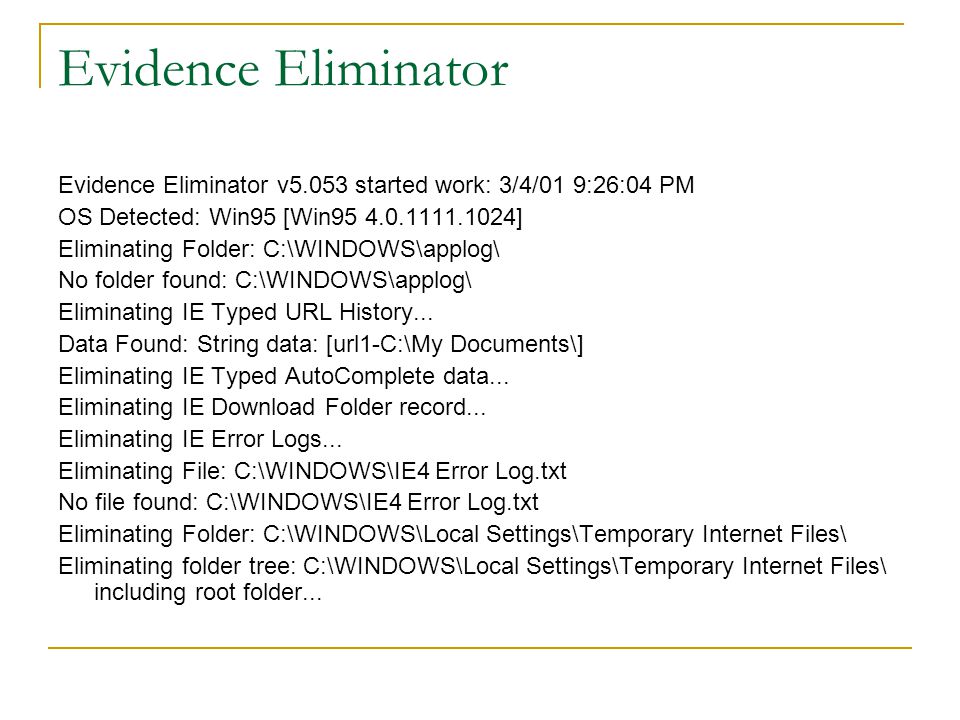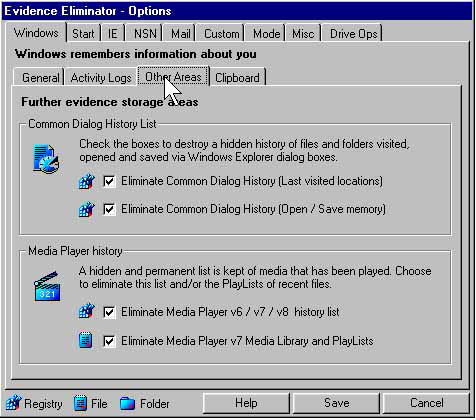

- Evidence eliminator replacement cracked#
- Evidence eliminator replacement full#
- Evidence eliminator replacement crack#
(3 ) Lacks an operative low-vacuum warning device as required. (2 ) Has vacuum hose(s) or line(s) restricted, abraded (chafed) through outer cover to cord ply, crimped, cracked, broken or has collapse of vacuum hose(s) when vacuum is applied.
Evidence eliminator replacement full#
(1 ) Has insufficient vacuum reserve to permit one full brake application after engine is shut off. (9 ) Brake failure or low fluid warning light on and/or inoperative.
Evidence eliminator replacement cracked#
(8 ) Fluid lines or connections leaking, restricted, crimped, cracked or broken. (7 ) Has hydraulic hose(s) abraded (chafed) through outer cover-to-fabric layer. (6 ) Has any visually observed leaking hydraulic fluid in the brake system. (4 ) Seeping or swelling brake hose(s) under application of pressure.


(2 ) No pedal reserve with engine running except by pumping pedal. (1 ) Master cylinder less than 1⁄ 4 full. (Including Power Assist Over Hydraulic and Engine Drive Hydraulic Booster). (2 ) Missing or inoperable breakaway braking device. (1 ) Absence of braking action on any wheel required to have brakes. (4 ) Cracked or broken mounting brackets, braces or adapters. (1 ) Compressor drive belts in condition of impending or probable failure. Inoperable or missing tractor protection valve(s) on power unit. Low Pressure Warning Device missing, inoperative, or does not operate at 55 psi and below, or 1⁄ 2 the governor cut-out pressure, whichever is less. (2 ) Tubing cracked, damaged by heat, broken or crimped.į. (5 ) Air hose cracked, broken or crimped. (4 ) Two hoses improperly joined (such as a splice made by sliding the hose ends over a piece of tubing and clamping the hose to the tube). (2 ) Bulge or swelling when air pressure is applied. Exposure of second color is cause for rejection. (Thermoplastic nylon may have braid reinforcement or color difference between cover and inner tube. (Rubber impregnated fabric cover is not a reinforcement ply). (1 ) Hose with any damage extending through the outer reinforcement ply. (2 ) Any portion of the drum or rotor missing or in danger of falling away.
Evidence eliminator replacement crack#
(1 ) With any external crack or cracks that open upon brake application (do not confuse short hairline heat check cracks with flexural cracks). No brakes on the vehicle or combination are applied upon actuation of the parking brake control, including driveline hand controlled parking brakes. Wedge Brake Data - Movement of the scribe mark on the lining shall not exceed 1/16 inch.ī. (8 ) Mismatch across any power unit steering axle of: (7 ) Missing brake on any axle required to have brakes. (d ) Steering axles: Lining with a thickness less than 1⁄ 4 inch at the shoe center for drum brakes, less than 1⁄ 8 inch for air disc brakes and 1⁄ 16 inch or less for hydraulic disc and electric brakes.

(c ) Non-steering axles: Lining with a thickness less than 1⁄ 4 inch at the shoe center for air drum brakes, 1⁄ 16 inch or less at the shoe center for hydraulic and electric drum brakes, and less than 1⁄ 8 inch for air disc brakes. (b ) Saturated with oil, grease, or brake fluid or (a ) Lining or pad is not firmly attached to the shoe (b ) For actuator types not listed in these tables, the pushrod stroke must not be greater than 80 percent of the rated stroke marked on the actuator by the actuator manufacturer, or greater than the readjustment limit marked on the actuator by the actuator manufacturer. Stroke must be measured with engine off and reservoir pressure of 80 to 90 psi with brakes fully applied. Any brake stroke exceeding the readjustment limit will be rejected. (a ) The maximum pushrod stroke must not be greater than the values given in the tables below and at § 393.47(e). (4 ) Audible air leak at brake chamber (Example-ruptured diaphragm, loose chamber clamp, etc.). (3 ) Loose brake components including air chambers, spiders, and cam shaft support brackets. (2 ) Missing or broken mechanical components including: shoes, lining, pads, springs, anchor pins, spiders, cam rollers, push-rods, and air chamber mounting bolts. (1 ) Absence of braking action on any axle required to have brakes upon application of the service brakes (such as missing brakes or brake shoe(s) failing to move upon application of a wedge, S-cam, cam, or disc brake). Appendix A to Part 396 - Minimum Periodic Inspection StandardsĪ vehicle does not pass an inspection if it has one of the following defects or deficiencies:


 0 kommentar(er)
0 kommentar(er)
